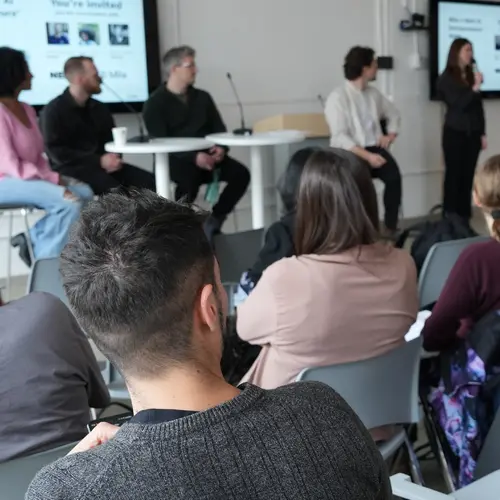
Guillaume Dumas
Biographie
Guillaume Dumas est professeur agrégé de psychiatrie computationnelle à la Faculté de médecine de l'Université de Montréal et chercheur principal du laboratoire de psychiatrie de précision et de physiologie sociale du Centre de recherche du CHU Sainte-Justine. Il est titulaire de la chaire IVADO IA en santé mentale et chercheur-boursier junior 1 du Fonds de recherche du Québec - Santé (FRQS) dans le domaine de l’ IA en santé et de la santé numérique. En 2023, il a été retenu dans le cadre du Programme des chercheurs mondiaux CIFAR-Azrieli pour le programme de recherche Cerveau, esprit et conscience. Il a également été nommé parmi les Futurs leaders canadiens de la recherche sur le cerveau par la Fondation Brain Canada.
Il a auparavant été chercheur permanent en neurosciences et en biologie computationnelle à l'Institut Pasteur (Paris, France), ainsi que chercheur postdoctoral au Center for Complex Systems and Brain Sciences à l’Université Florida Atlantic (FAU), aux États-Unis. Il est titulaire d'un diplôme d'ingénieur en ingénierie avancée et informatique (École centrale Paris), de deux masters (physique théorique, Université Paris-Saclay; sciences cognitives, ENS/EHESS/Paris 5) et d'un doctorat en neurosciences cognitives (Sorbonne Université).
Ses recherches visent à combiner l’intelligence artificielle, les neurosciences cognitives et la médecine numérique à travers un programme interdisciplinaire suivant deux axes principaux :
- L’intelligence artificielle en santé mentale, par la création de nouveaux algorithmes pour étudier le développement de l'architecture cognitive humaine et pour fournir une médecine personnalisée en neuropsychiatrie grâce à des données allant du génome à celles des téléphones intelligents;
- Les neurosciences sociales en intelligence artificielle, par la traduction de la recherche fondamentale sur le cerveau et le formalisme des systèmes dynamiques en des modèles hybrides neurocomputationnels et d’apprentissage automatique (NeuroML) et de nouvelles architectures présentant des capacités d'apprentissage social (NeuroIA Sociale et IHM).



